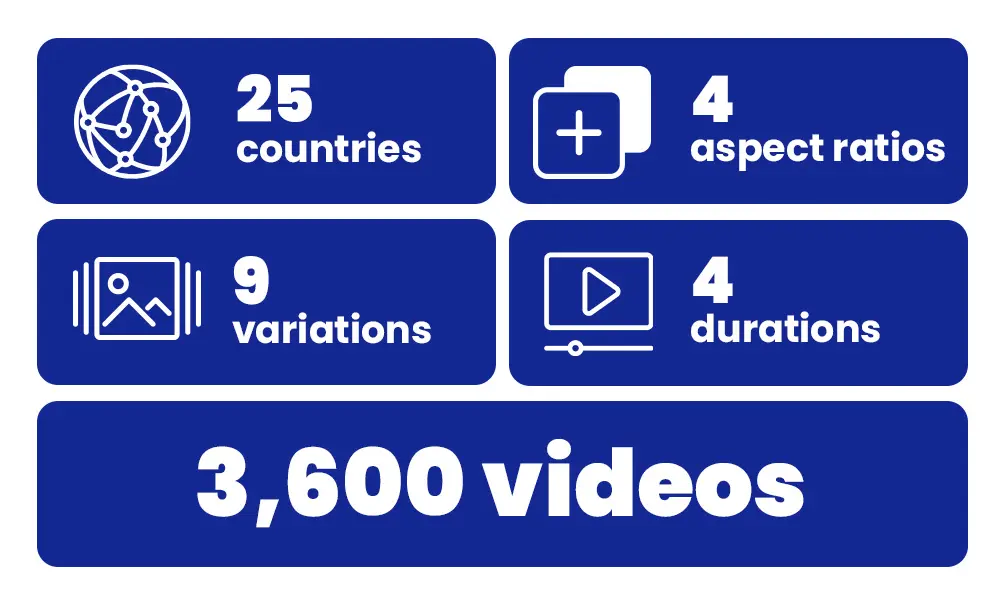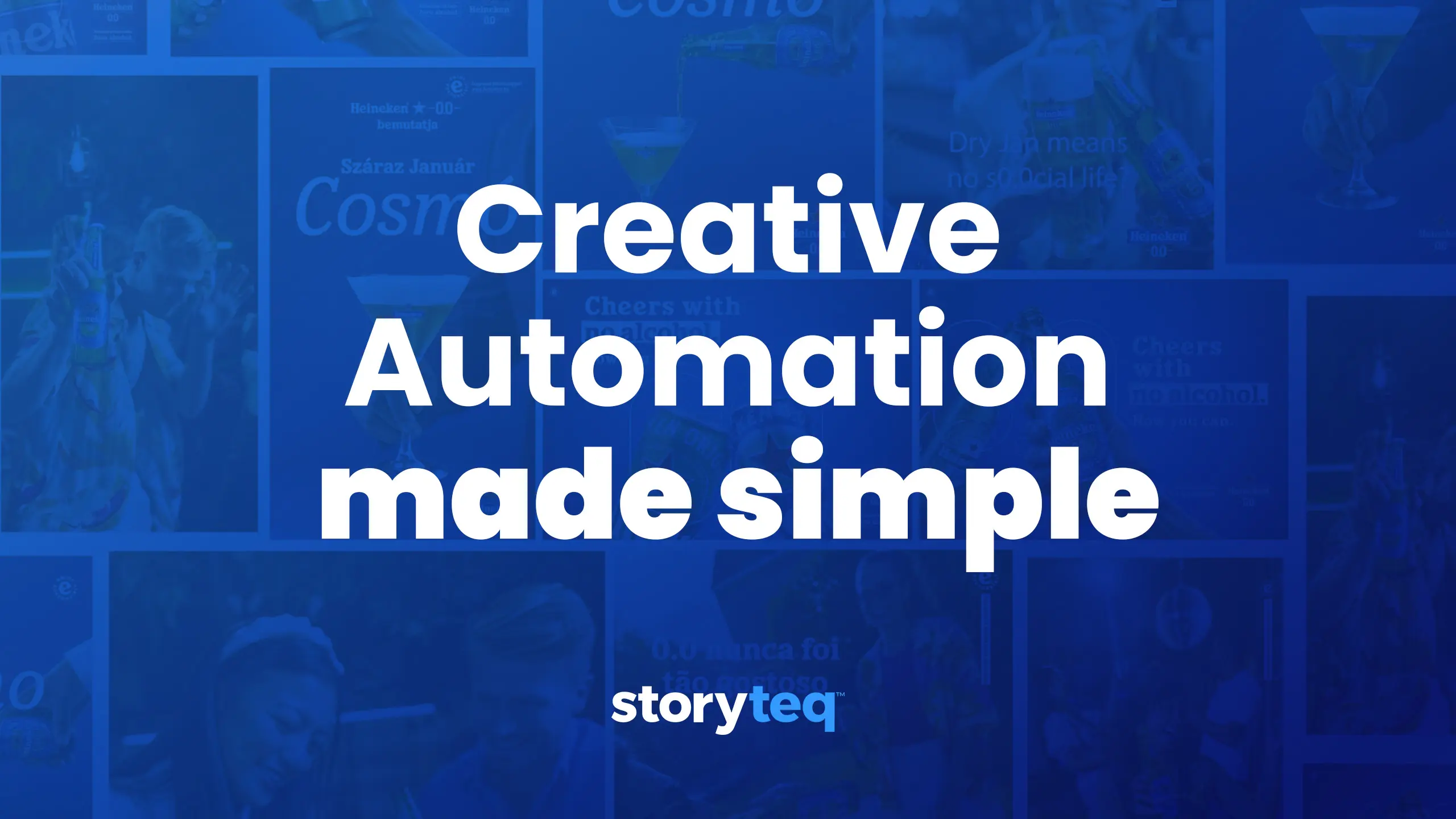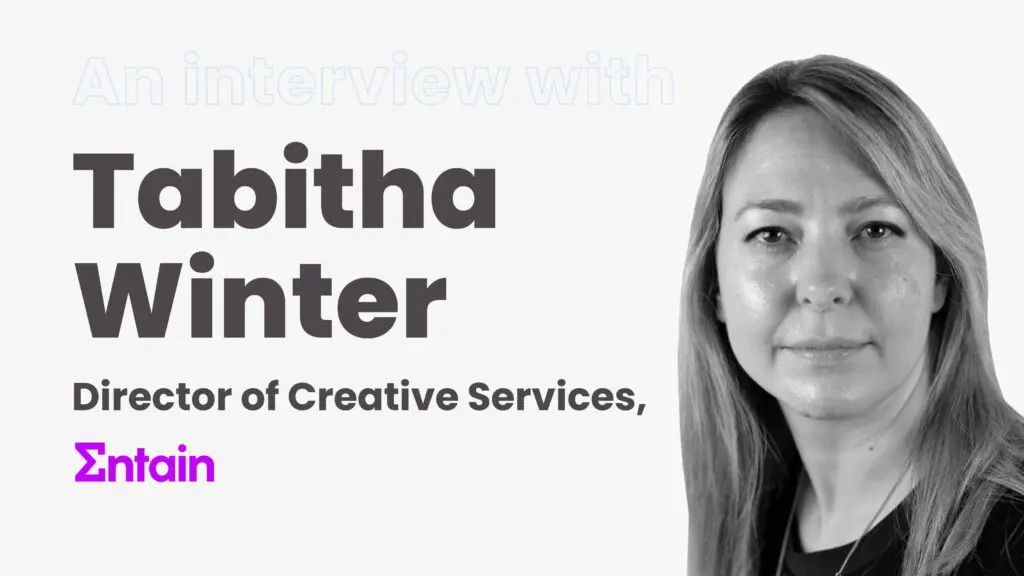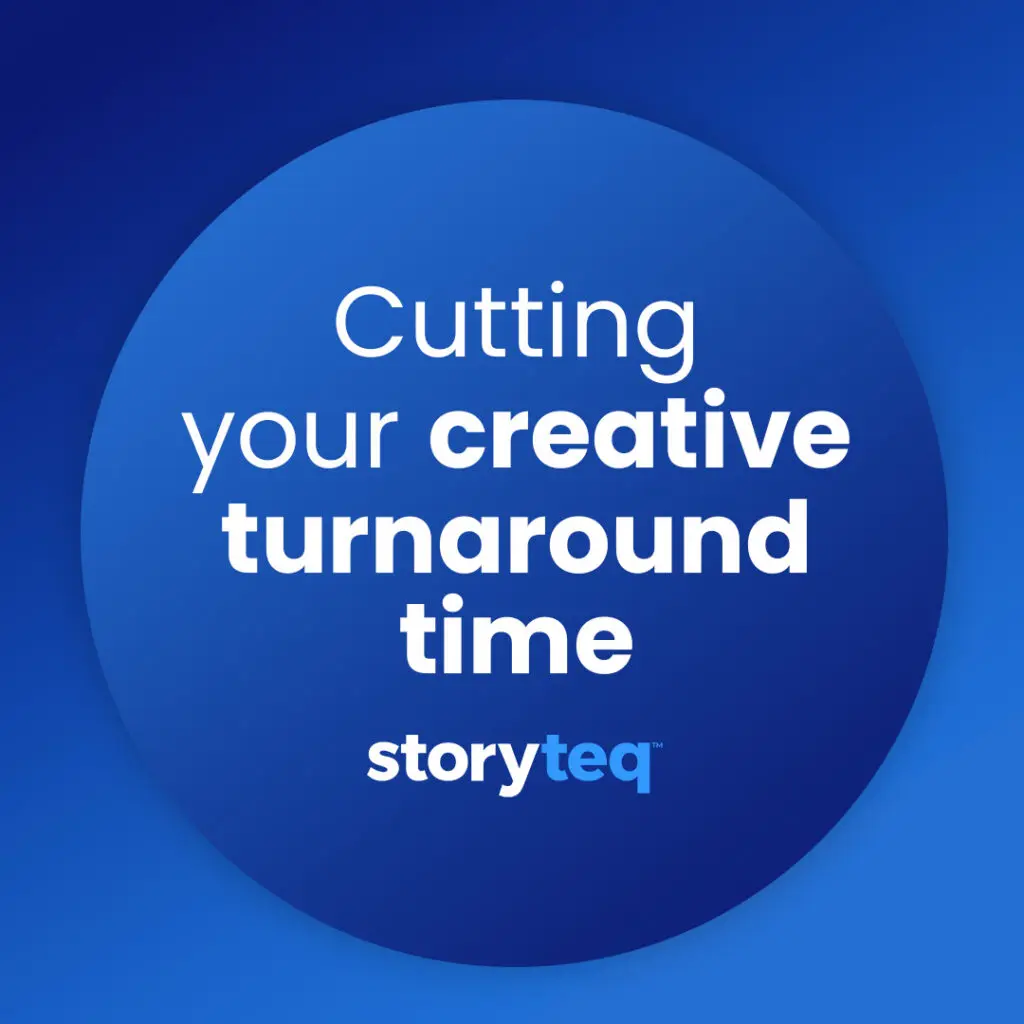Understanding Creative Automation
In the realm of modern marketing, understanding Creative Automation is key to staying ahead. It transforms content creation, making it faster, more efficient, and scalable. In this section, we’ll define Creative Automation and explore its significance for modern marketing. Let’s start off with a definition.
A new role for creative teams
In essence, Creative Automation revolutionises content creation by leveraging technology to accelerate the generation, customisation, and dissemination of digital content. By automating repetitive tasks inherent in content creation, such as generating bulks of variations for different markets and audiences, these tools empower marketing and advertising professionals to produce high-quality content with unprecedented efficiency. As a bonus, it enables designers to focus on strategy and creativity rather than manual labour. Ideal! But there are more benefits.
Work faster, better, cheaper
This transformative approach to content creation significantly streamlines marketing processes. It minimises creative turnaround time by automating repetitive tasks like design and customisation, enabling designers to produce more creative design in less time and marketers to swiftly respond to market trends. Moreover, it simplifies localisation efforts, facilitating the tailoring of content for different regions and languages effortlessly.
By optimising these processes, Creative Automation enhances return on ad spend (ROAS) through the execution of more targeted, more cost efficient and relevant campaigns. Crucially, it reinforces brand consistency by centralising assets and guidelines, ensuring all content aligns with brand identity across channels.
In essence, Creative Automation empowers marketers to achieve more, faster, and with greater impact in today’s dynamic digital landscape. However, it is also a big shift in strategy and production processes, with all the costs and difficulties associated. So when is it worthwhile to invest in Creative Automation? We’ll explain in the next section.
When do you need Creative Automation?
While automated content offers numerous benefits, it’s essential to consider the time and effort required to integrate it into existing processes. If your need is limited to a small number of ad versions, the investment may not be justified. Therefore, the first step is to evaluate whether Creative Automation tools will ultimately save or cost you time. Here are three scenarios where such tools prove invaluable:
Global events
Creative Automation shines during major global events like Valentine’s Day, Christmas, or Black Friday. These occasions demand rapid scaling of promotional activities, necessitating swift and efficient content creation and distribution.
Always-on campaigns
Creative Automation is indispensable for managing always-on campaigns that require continuous updates and adaptations to maintain relevance. These campaigns often demand the creation of new versions and variations over time to sustain engagement and effectiveness.
Global expansion
Another key consideration is the presence of at least a “third multiplier” – factor, such as the number of asset sizes, target markets, headline variations, and distribution channels. If the scale of asset production justifies templating, the efficiency gains can be substantial. However, if the need is limited to a small number of versions, the added complexity of templating may outweigh the benefits.
Therefore, identifying these scenarios where scalability, agility, and efficiency are paramount underscores the need for Creative Automation. If these 3 aspects are present in your company, you can follow the practical steps in the section below to get started with Creative Automation.

4 multiplier factors. It sometimes takes over a thousand versions of a single creative marketing assets to account for different countries, durations, aspect ratios and versions. Time to invest in Creative Automation.
Step-by-step plan for getting started
Transitioning to Creative Automation may appear intimidating at first, but with a well-defined plan in place, you can seamlessly shift from conventional workflows to automated systems. By following four straightforward steps, typically spanning about 6 to 8 weeks, you’ll be equipped to develop your initial templates and embark on your Creative Automation journey with confidence!
Step 1: Identify your Creative Automation needs
Before diving into the world of Creative Automation, it’s crucial to assess your organisation’s specific requirements and pain points. This initial step sets the foundation for selecting the right tools and strategies to meet your objectives effectively. This involves:
- Full Content Audit: Review all existing content assets to understand the scope and scale of your creative requirements.
- Analysis of Past Campaigns: Evaluate the performance of previous campaigns to identify areas for improvement and opportunities for automation.
- Analysis of Upcoming Campaigns: Anticipate future campaign needs by examining upcoming initiatives. Consider the design requirements, standardisation opportunities, and potential quick wins.
- Assess Current Workflow: Map out your existing workflow from design conceptualisation to live campaign deployment. Identify bottlenecks and inefficiencies that could be addressed through automation.
- Set Tangible Metrics: Define clear success metrics for your Creative Automation efforts. Measure factors such as time savings for your team, cost savings compared to traditional agency costs, and tangible improvements in campaign performance. These metrics will provide valuable insights for quarterly business reviews and ongoing optimisation efforts.
By thoroughly assessing your Creative Automation needs and current workflows, you’ll be better equipped to select the right tools and strategies to streamline your content creation processes effectively. This proactive approach sets the stage for successful implementation and maximises the impact of Creative Automation on your marketing initiatives.
Step 2: Template thinking
In this step, we explore the importance of template thinking, which is crucial for harnessing the power of Creative Automation. Templates are like blueprints for your creative assets, providing pre-designed layouts with dynamic elements. They enable rapid and consistent asset creation, saving time and effort in the process.
Understanding templates
Templates streamline the design process by standardising certain elements, such as logo placements, headlines, and call-to-actions (CTAs). This standardisation ensures brand consistency across various assets and campaigns. With templates, designers can focus more on creativity and less on repetitive tasks.
Transitioning to template thinking
For graphic designers accustomed to manual creation and manual production processes, adopting template thinking requires a mindset shift. It’s a move from traditional, manual design processes to a more systematic and logical approach. However, this shift is essential for maximising the efficiency and scalability of Creative Automation.
Tools for template creation
Creating templates can be done using specialised tools like Adobe After Effects or through in-platform template builders provided by Creative Automation tools. These tools empower designers to customise and adjust templates quickly, catering to specific campaign needs. More about the selecting the right tool in the next step.
Step 3: Choosing the right tool for you
When it comes to selecting the ideal Creative Automation tool, several factors need to be considered to ensure it aligns with your specific needs and requirements.
Factors to Consider:
- Integration Compatibility: Evaluate how well the automation tool integrates with your existing systems and software to ensure seamless workflow integration.
- Template Creation Options: Look for versatility in template creation, including options like in-house template builders capable of generating statics, videos, and HTML5 banners. Consider if the tool offers integrations with popular design software like Photoshop or extensions for more complex video templates like Adobe After Effects.
- Input and Output Options: Assess the flexibility of input and output options supported by the tool to ensure compatibility with your content creation and distribution needs.
- Customer Support and Services: Consider the availability of essential services such as 24/7 customer support, consultancy services, and live onboarding assistance to provide necessary guidance and support during implementation.
- Free Trial: Opt for tools that offer a free trial period, allowing you to test the platform’s features and functionalities before committing to a purchase.
When it comes to the above features, 3 platforms stand out.
Leading Creative Automation Platforms:
- Storyteq: Renowned as a leading Creative Automation & Content Marketing Platform, Storyteq excels in asset delivery, customer support, and offers a unique integration with Adobe After Effects.
- Creatopy: With advanced AI capabilities, Creatopy empowers users with features like image generation, smart image cropping, text generation, one-click translations, template layouts builder, and one-click animations. It provides a robust learning hub and inspiration gallery for creative exploration.
- Celtra: Known for enhancing digital advertising endeavours, Celtra offers real-time syncing between a brand’s portal and its assets catalogue, facilitating seamless management and distribution of creative assets for marketing campaigns.
By carefully evaluating these factors and exploring the offerings of leading Creative Automation platforms, you can make an informed decision that best suits your marketing and content creation needs.
Step 4: Getting started!
The final step of your Creative Automation journey. Now that you’ve laid the groundwork and identified your needs, it’s time to take the plunge and start implementing your chosen automation solution. Here are some final tips, common pitfalls to avoid, and best practices to ensure a smooth transition:
Final tips:
- Start Small: Begin with a pilot project or a small-scale implementation to test the waters before fully committing to Creative Automation across all your campaigns.
- Stay Flexible: Be open to adjusting your approach based on feedback and insights gathered during the implementation process. Flexibility is key to adapting to evolving requirements and optimising your automation workflows.
- Communication is Key: Keep all stakeholders informed and involved throughout the implementation process to ensure alignment and foster collaboration across teams.
Common pitfalls to avoid:
- Overlooking Training and Support: Ensure adequate training and support resources are available for your team to learn and utilise the new automation tools effectively. Neglecting this aspect can lead to frustration and hinder adoption.
- Ignoring Feedback: Don’t dismiss feedback from end-users or stakeholders. Instead, use it as valuable input for refining your automation workflows and addressing any pain points or concerns.
Best practices:
- Monitor and Measure: Establish key performance indicators (KPIs) to track the success of your Creative Automation initiatives. Regularly monitor and analyse metrics such as time savings, cost reductions, and campaign performance to gauge the impact of automation on your business.
- Continuous improvement: Embrace a culture of continuous improvement by regularly reviewing and optimising your automation workflows. Identify areas for enhancement and implement refinements to maximise efficiency and effectiveness.
- Celebrate Success: Acknowledge and celebrate milestones and achievements along the way to maintain morale and motivation among your team. Recognising their efforts and contributions can foster a positive culture and drive continued innovation.
By following these final tips, avoiding common pitfalls, and adhering to best practices, you’ll be well-equipped to embark on your Creative Automation journey and unlock the full potential of automated content creation in your organisation!
Conclusion
In this comprehensive guide to Creative Automation, we explore how this transformative approach revolutionises content creation in modern marketing. We start by defining Creative Automation and highlighting its significance in accelerating content generation, customisation, and dissemination. Through automation, marketers can streamline processes, minimise turnaround time, simplify localisation efforts, and enhance brand consistency, ultimately driving improved ROI.
The blog then delves into key scenarios where Creative Automation proves invaluable, such as during global events, always-on campaigns, and global expansion initiatives. Following this, a step-by-step plan for getting started with Creative Automation is outlined. This plan covers identifying automation needs, adopting template thinking, choosing the right automation tools, and practical tips for implementation success.
As you wrap up this guide, you’re not just closing a chapter but opening the door to a new era of creativity and efficiency. By embracing Creative Automation, you’re empowering your team to break free from constraints, elevate your campaigns, and achieve more than ever before!
Want to know how Creative Automation applies to your organisation?
Schedule a call with one of our experts for a free demo!





